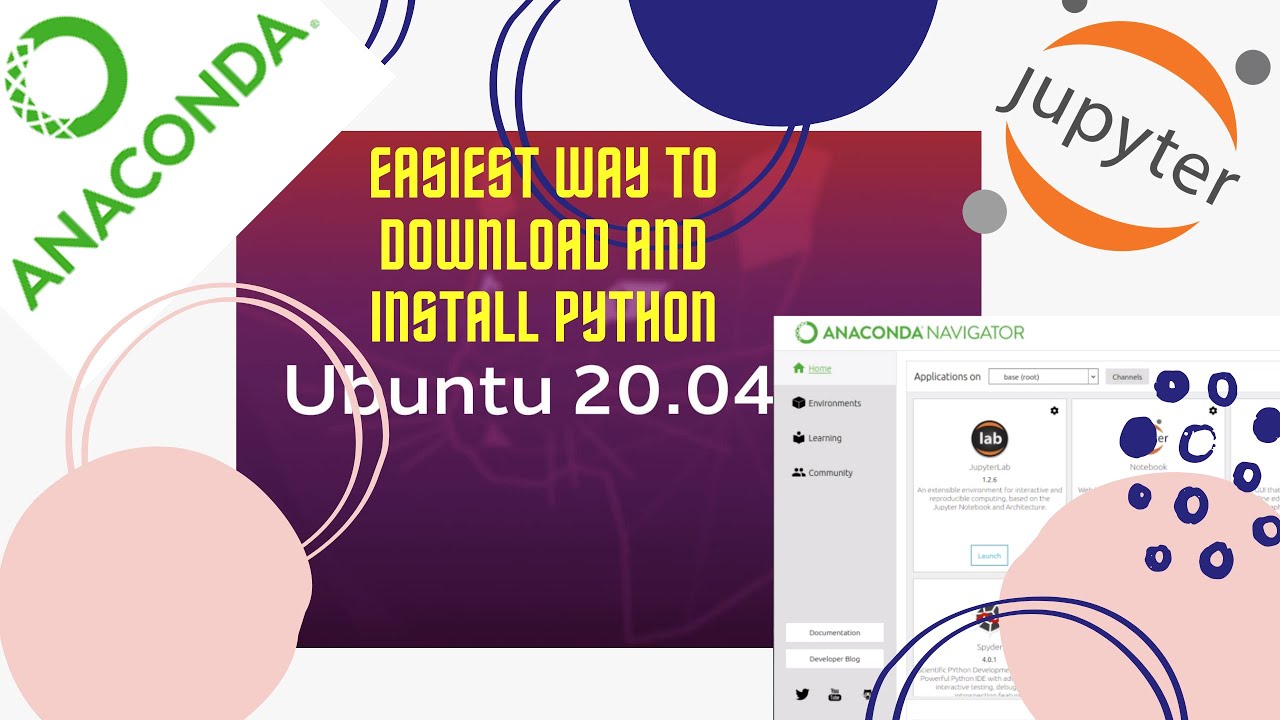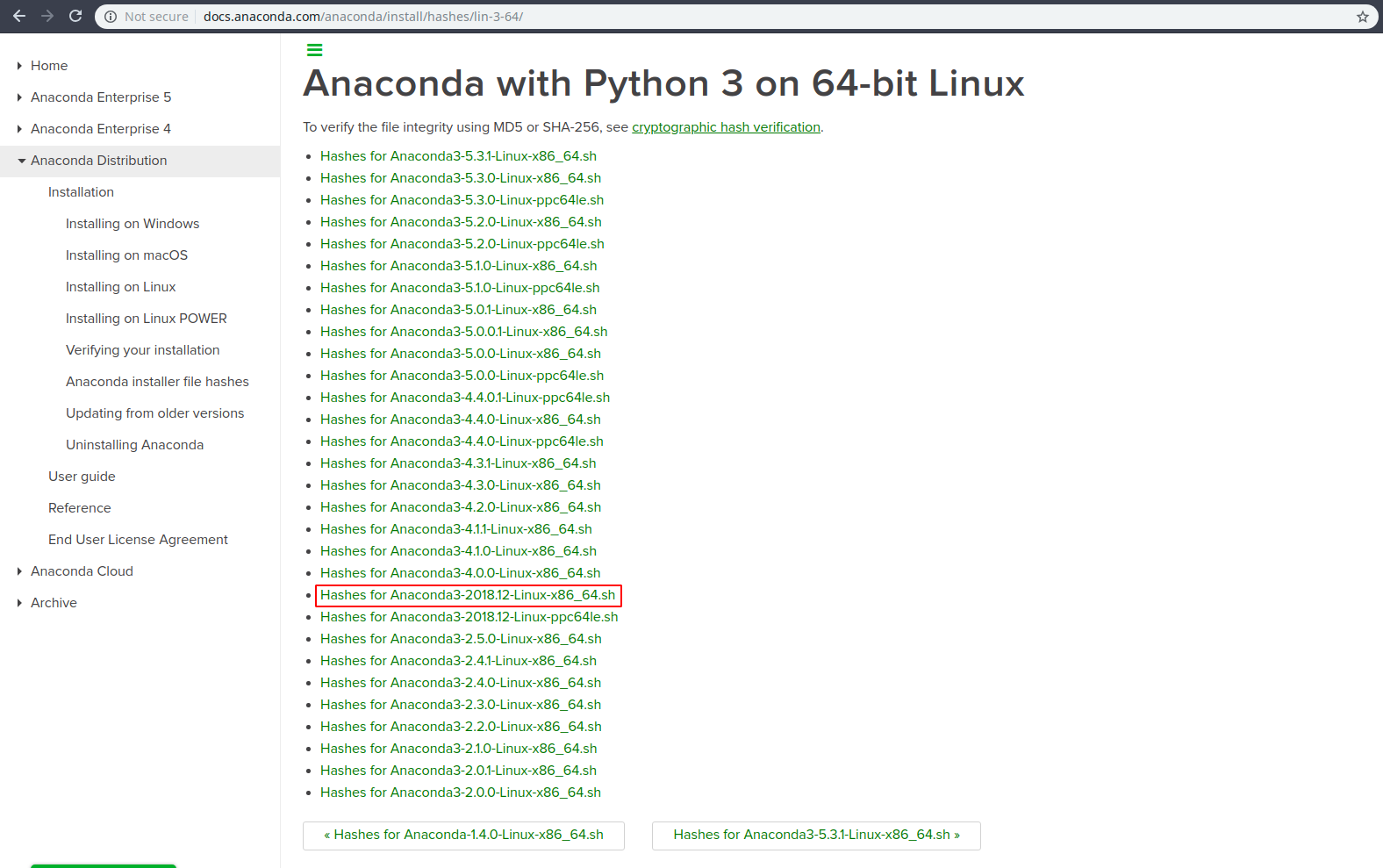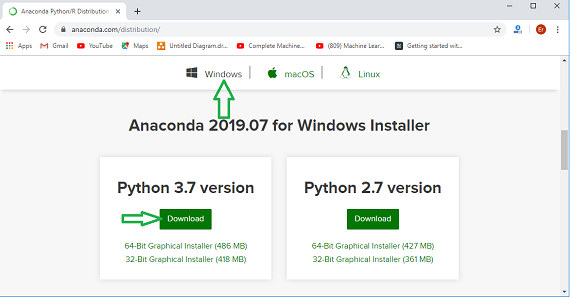

- #ANACONDA PYTHON 3.7 DOWNLOAD LINUX HOW TO#
- #ANACONDA PYTHON 3.7 DOWNLOAD LINUX INSTALL#
- #ANACONDA PYTHON 3.7 DOWNLOAD LINUX SOFTWARE#
- #ANACONDA PYTHON 3.7 DOWNLOAD LINUX CODE#
When you invoke cmake add -D RDK_BUILD_SWIG_WRAPPERS=ON to the arguments. Most operating systems have an appropriate package. If you’d like to be able to use the 3D descriptors, you need to have a copy of eigen3 installed. If you’d like to be able to generate high-quality PNGs for structure depiction, you should have cairo installed on your system and build the RDKit with cairo support enabled: -DRDK_BUILD_CAIRO_SUPPORT=ON You can enable support for the Avalon toolkit by adding the argument -DRDK_BUILD_AVALON_SUPPORT=ON to your cmake command line.

You can enable support for generating InChI strings and InChI keys by adding the argument -DRDK_BUILD_INCHI_SUPPORT=ON to your cmake command line. Testing the build (optional, but recommended) ¶Ĭmake - DRDK_BUILD_PYTHON_WRAPPERS = OFF. See below for a list of FAQ and solutions. Make : this builds all libraries, regression tests, and wrappers (by default). : See the section below on configuring the build if you need to specify a non-default version of python or if you have boost in a non-standard location PYTHONPATH: make sure it includes $RDBASEĬmake. The following are required if you are planning on using the Python wrappers:

OS X: DYLD_LIBRARY_PATH: make sure it includes $RDBASE/lib and wherever the boost shared libraries were installed Linux: LD_LIBRARY_PATH: make sure it includes $RDBASE/lib and wherever the boost shared libraries were installed RDBASE: the root directory of the RDKit distribution (e.g. Building the RDKit ¶įetch the source, here as tar.gz but you could use git as well:Įnsure that the prerequisites are installed If you have any problems with this step, check the boost installation instructions. bootstrap.sh -with-libraries=serialization bootstrap.sh -with-libraries=python,serialization The boost site has detailed instructions for this, but here’s an overview: usr/local/src/boost_1_58_0)īuild the required boost libraries. There is a workaround for this below in the (see FAQ) section.ĭownload the boost source distribution from the boost web siteĮxtract the source somewhere on your machine (e.g.

We’ve seen at least one example on a Fedora system where cmake compiled using a user-installed version of boost and then linked against the system version. If you do have a version of the boost libraries pre-installed and you want to use your own version, be careful when you build the code.
#ANACONDA PYTHON 3.7 DOWNLOAD LINUX INSTALL#
This may require that you install a sqlite3-dev package. This probably means that you need to install the python-dev package (or whatever it’s called) for your linux distribution. The following are required if you are planning on using the Python wrappers if your linux distribution doesn’t have an appropriate package. Visual Studio 2015: it may be that older versions of the compiler also work, but we haven’t tested them.Ĭmake. It will automatically be disabled when this older compiler is used.Ĭlang v3.9: it may be that older versions of the compiler also work, but we haven’t tested them.
#ANACONDA PYTHON 3.7 DOWNLOAD LINUX CODE#
G++ v4.8: though note that the SLN parser code cannot be built with v4.8. This means that the compilers used to build it cannot be completely ancient. Starting with the 2018_03 release, the RDKit core C++ code is written in modern C++ for this release that means C++11. Thanks to Gianluca Sforna’s work, binary RPMs for the RDKit are now part of the official Fedora repositories:Įddie Cao has produced a homebrew formula that can be used to easily build the RDKit Building from Source ¶ $ sudo apt-get install python-rdkit librdkit1 rdkit-data
#ANACONDA PYTHON 3.7 DOWNLOAD LINUX HOW TO#
How to install RDKit with Conda ¶Ĭreating a new conda environment with the RDKit installed requires one single command similar to the following:: The conda source code repository is available on github and additional documentation is provided by the project website. A possible (but a bit more complex to use) alternative is provided with the smaller and more self-contained Miniconda. The easiest way to get Conda is having it installed as part of the Anaconda Python distribution. It has several analogies with pip and virtualenv, but it is designed to be more “python-agnostic” and more suitable for the distribution of binary packages and their dependencies.
#ANACONDA PYTHON 3.7 DOWNLOAD LINUX SOFTWARE#
It supports the packaging and distribution of software components, and manages their installation inside isolated execution environments. Cross-platform using Conda ¶ Introduction to Conda ¶Ĭonda is an open-source, cross-platform, software package manager. Below a number of installation recipes is presented, with varying degree of complexity.


 0 kommentar(er)
0 kommentar(er)
